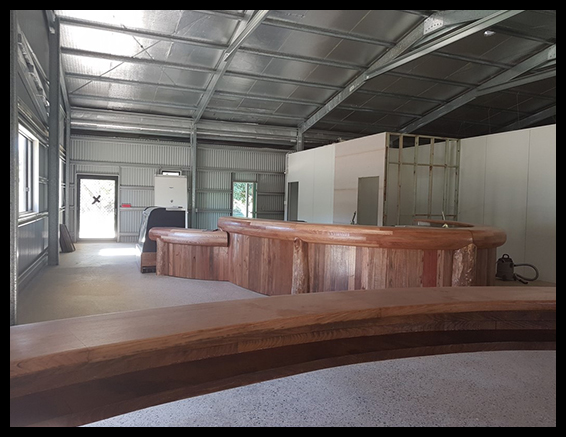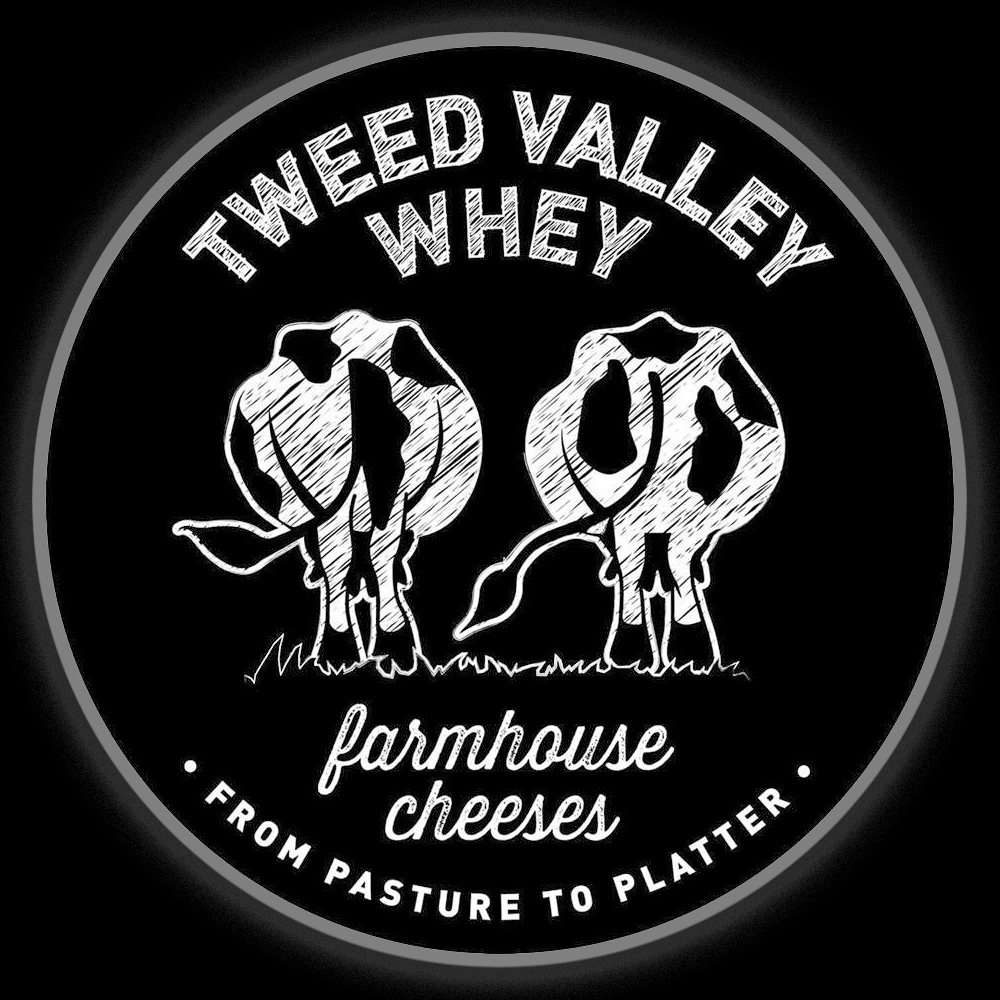
Farm-Dairy


Farm-Dairy
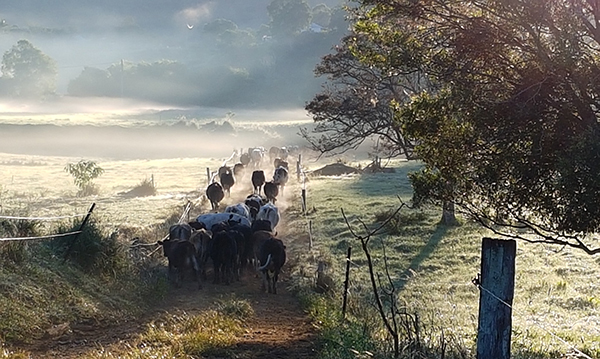
Harnett's Dairy Farm
A fourth generation family owned and run dairy farm, operated by Rob and Sue Harnett and sons.
Located in the Beautiful Tweed Valley
Our property is located at the entrance to the Tweed in the catchment area known as the Burringbar Valley. We dairy farm on 80 hectares of land as well as a 60 hectare block at Mooball. We milk a mixed herd of 100 head of Holstein Fresian, Jersey and Brown Swiss cattle. Our milk is supplied to Norco Co-op Ltd – a farmer owned co-operative, as well as our family owned, on farm cheese factory.
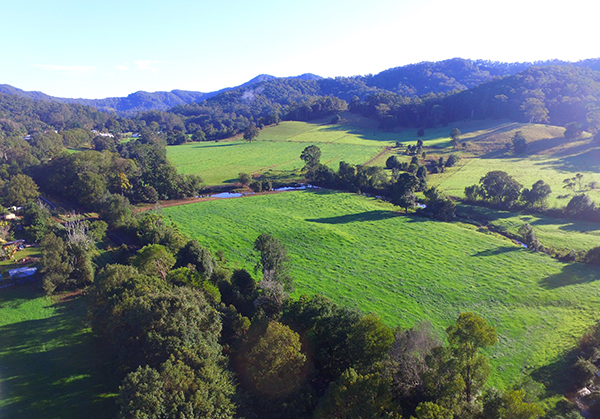
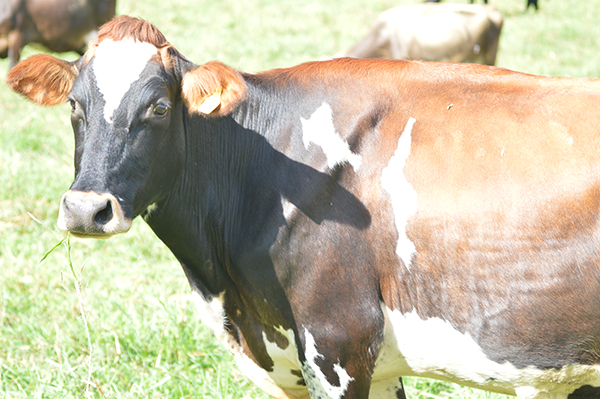
Pasture Management
Sustainable management techniques learned from generations of dairy farming, such as our rotational grazing system and never overstocking, aids our goals of having constant green feed at all times.
The herd is predominantly fed off home grown pasture with supplements brought in when needed.
Regular soil testing to understand nutrient requirements of the different soil types on the farm.
Water troughs, excluding stock from sensitive riparian areas and land care management
Dung beetle friendly drenches, released summer and winter active dung beetles on the farm
Irrigation, Effluent and Land Care plans in place
Animal welfare is a priority. We ensure shade in the paddocks and have shade sails at the dairy. Laneways in good order to facilitate stock movement and reduce foot issues (grazing animals need to be mobile to forage effectively)
We breed our own replacement stock and rear all of calves either as replacement heifers in the herd or sold as veal at 10 months of age.
Managing Our Winter Feed
We over sow the majority of the farm with annual ryegrass in Autumn
Our system of paddock preparation is mulching after grazing in summer so that there is not a large bulk of grass at planting in Autumn. This also increases the carbon content of our soils and improves the organic matter and fertility in our soil profile. This assists germination of emerging ryegrass. In Autumn prior to grazing, paddocks are over sown with annual ryegrass, plaintain and chickory. The milking herd then graze the paddock and walk in the sown rye grass seed .
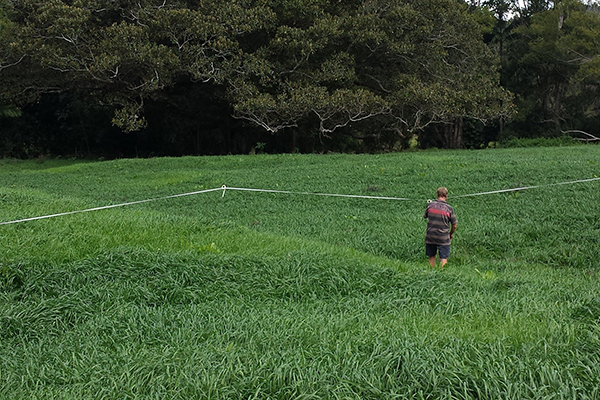
Paddocks are then mulched and once rye grass is about 2 weeks old the pasture is nipped off to keep summer grasses low to assist the establishment of the rye.
We then vary the length of the grazing rotation depending on growth and conditions.
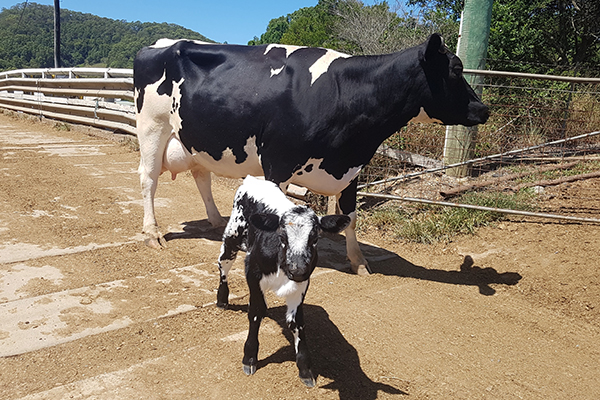
Beef Cattle
We select our best cows to breed from and the balance are inseminated with a Canadian breed know as “speckle park”.
Speckle Park cattle are a Canadian Breed that yield consistently above industry averages, they have good marbling ability and conversion rates. The beef operation adds to our dairy income and pays for the feed for our dairy heifers to ensure that they are in excellent condition when they come into the herd.
Diversifying into Cheese Making
Some years ago we diversified our dairy business into a very micro cheese making operation. I was the lucky recipient of a cheese making scholarship through Dairy Australia and we learnt and made cheese for approx. 4 years on a very small scale until we were confident enough to follow through with our initial business plan of building an on-farm cheese making facility with a retail outlet and locavore cafe
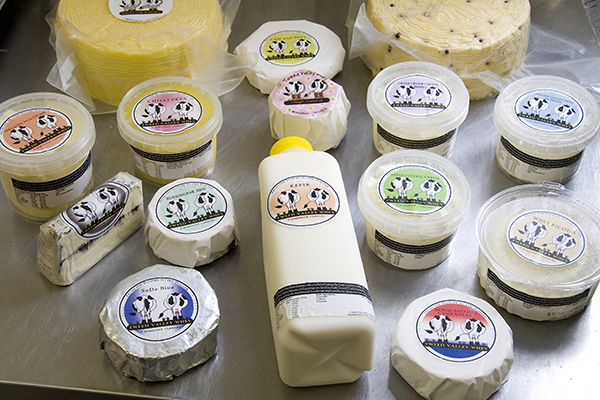
Making the Dream a Reality
Delays with planning approval and working towards an achievable set of construction conditions proved a major stumbling point. We put this time to good use and concentrated on pasture and herd improvement, a diploma in agribusiness management, and attending marketing, social media and tourism forums and short courses. We also became involved in the formation of the Burringbar Community Association Inc and the sub-group being the Burringbar Growers Group.
Our cheese factory is now up and running and we are selling our cheeses and yoghurts as well as other artisan products in our on farm outlet and showcasing them in our café.
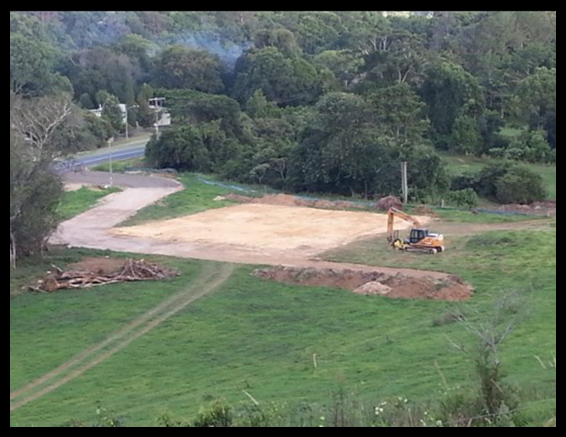
Roadworks and Foundation Begins
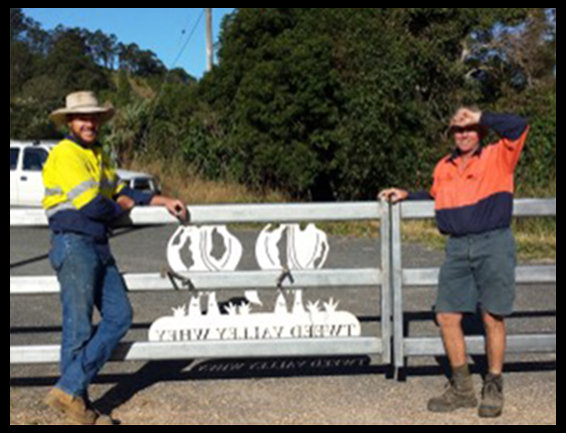
Bitumen Driveway
and Gateway
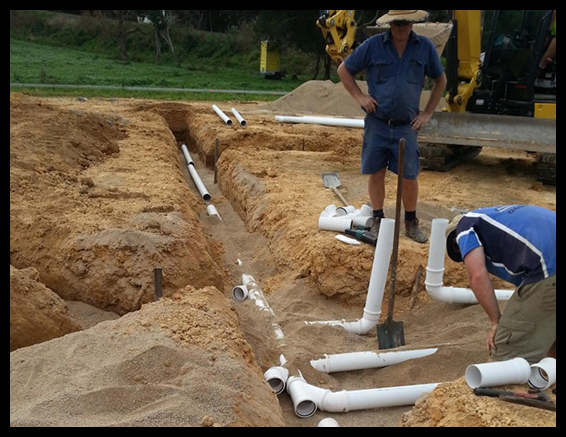
The Labyrinth of Underslab Plumbing
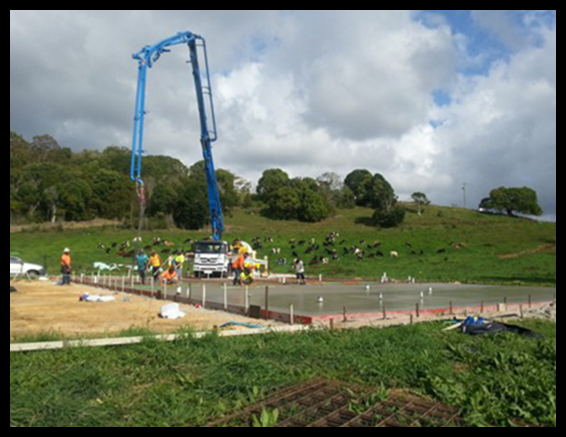
The Slab is Poured, Cows Supervising
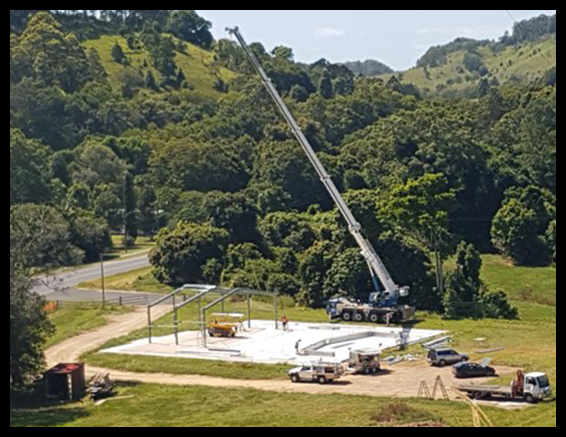
Standing the Shed Trusses
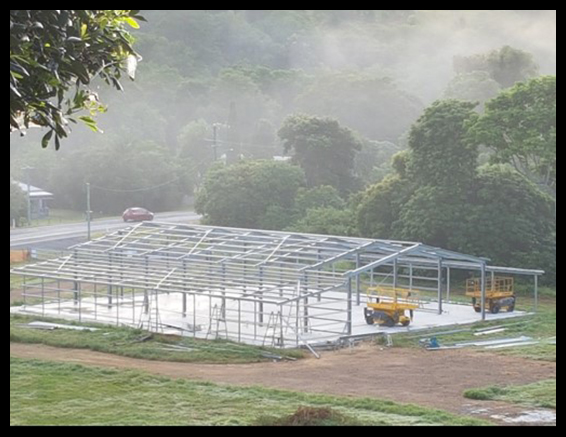
Main Frame
Completed
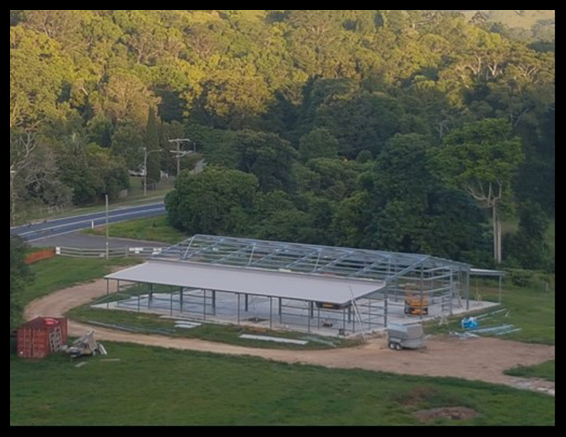
The Roof Goes on
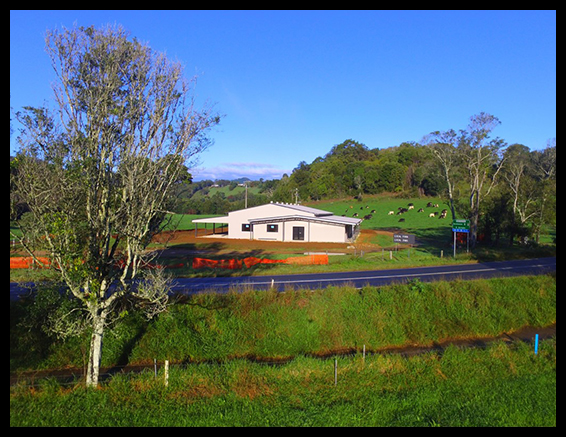
The Shed build Completed
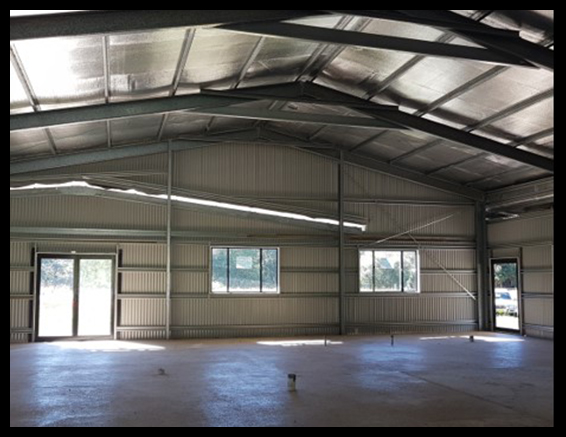
Prior to Cheese Factory and Coolroom Fitout
